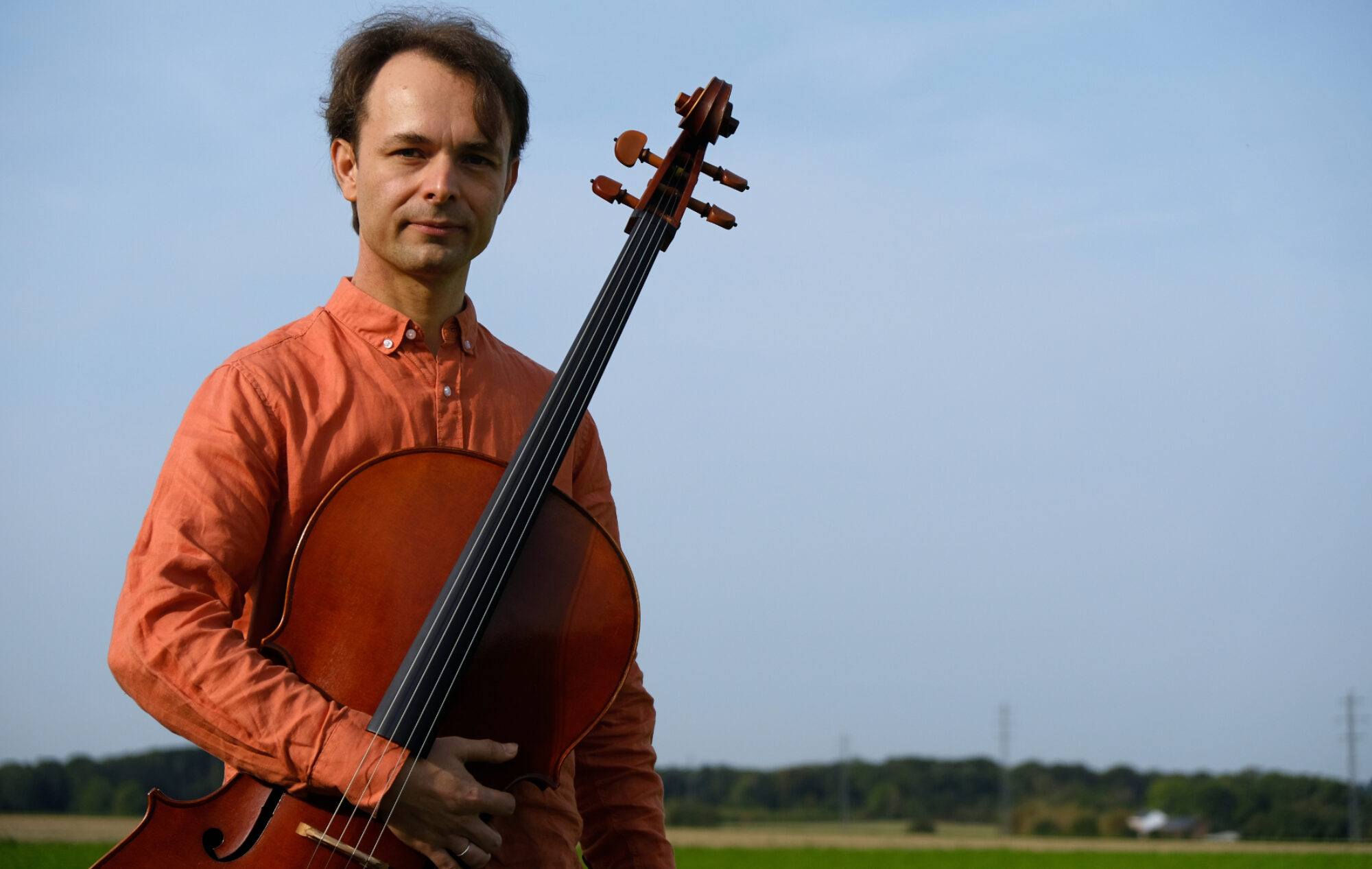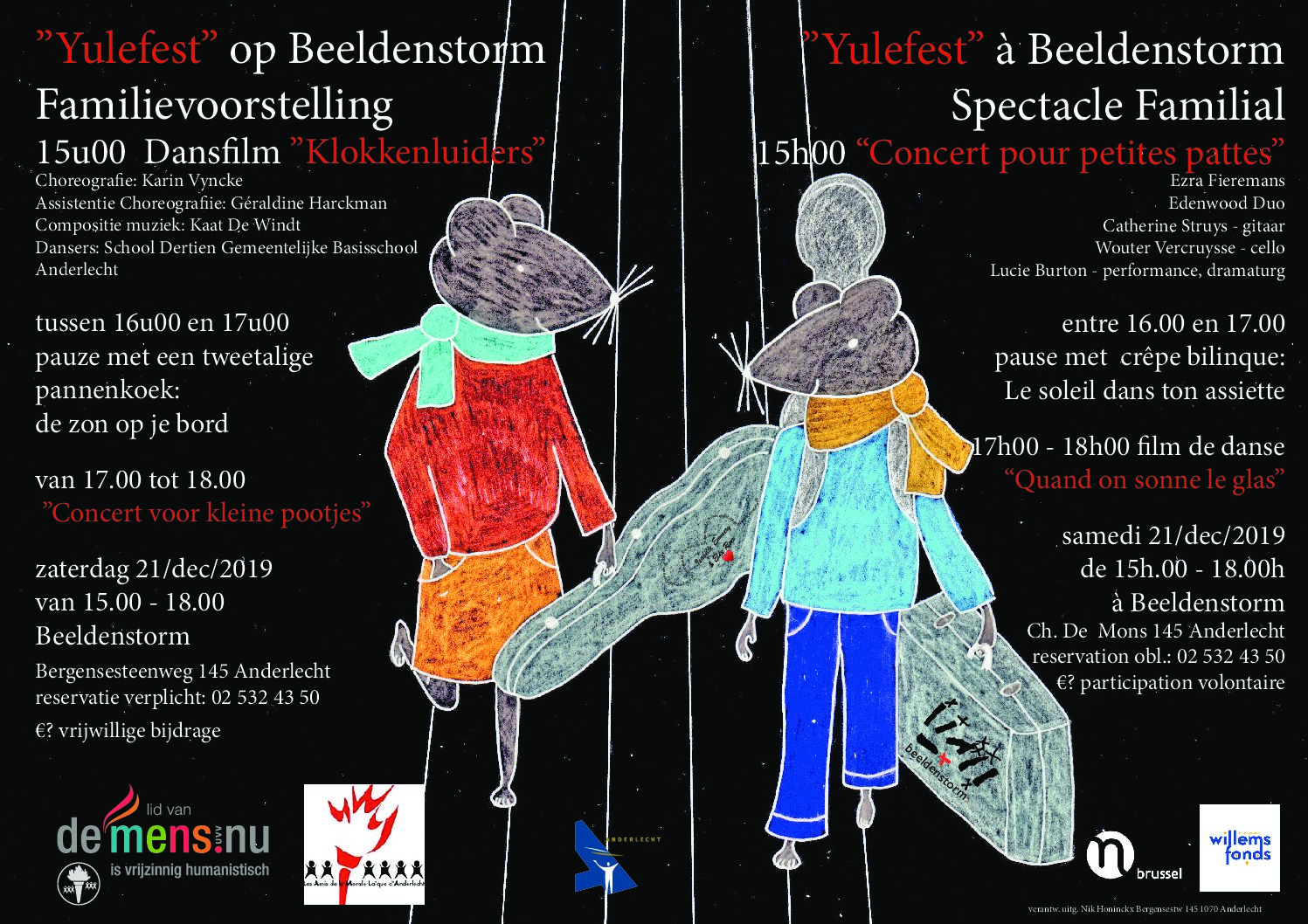The Septimus Trio (Nowak – Verpoest – Vercruysse) made the world premiere recording of Frederick Septimus Kelly’s String Trio.
This recording was made possible by the generous funding of C. Jones, F.S. Kelly’s great niece and with the support of Beeldenstorm and the Flowers of War.
FS Kelly String Trio
The irony of FS Kelly’s catalogue is that his most substantial work is scored for a combination that hardly exists today – the string trio. The string quartet is generally considered the most demanding idiom to write for, because it only contains four lines, making the texture incredibly transparent. Given most chords require three or four tones to be sounded to create a sonorous texture to support the melody, the demands on the composer to beautiful lines that also can come together make a satisfactorily rich backdrop for the leading voice, are extreme. If it is difficult to score satisfactorily for four parts, then writing for three is clearly even more technically demanding both for the composer and for the players – Kelly’s String Trio’s parts are filled with double stops. The compositional challenges are clearly demonstrated by the scarcity of masterworks in the genre.
If we disregard baroque trio sonatas, then the greatest string trio is the Mozart Divertimento in E♭ major, K. 563, with the Ernő Dohnányi Serenade in C major, Op. 10, probably the second best work. Beethoven wrote five string trios and Schubert two, (D 471 in one movement, and D 581, both in B flat major). None of their trios are stronger works than Kelly’s. However it might take until Kelly’s trio is arranged for string orchestra, as the Dohnányi has been, before a wider audience can appreciate just how much drama the work contains. This string orchestra arrangement will occur shortly.
In Kelly’s String Trio, we have the rarest of all beasts, an Australian romantic ‘War Horse’. It was written over an exceptionally long period, taking three years of intense work, which he began in 1909, and completed it in Sydney at the end of May 1911, where it was premiered on Friday 4 August 1911 in St James’ Hall (opposite St James Church in King Street). It is the greatest late ‘romantic’ work written for strings by an Australian composer. What is initially hard to reconcile is that it sounds like it might have been written by Brahms, the closest comparisons to the work being Brahms’ first two string quartets Op. 51 No.1 and 2.
The String Trio exudes the freshness of youth and the angst also, the key of B minor giving a hint of what will come. Traditionally the key of fate, Bach uses it in his Mass in B minor and the St John Passion, Schubert in his Unfinished Symphony, Brahms in his Clarinet Quintet, Dvořák in his Cello Concerto, Tchaikovsky in his Pathetique Symphony, Liszt in his Piano Sonata in B minor and Wagner in the Ride of the Valkyries. These are all works supercharged with deep feeling, and from our position in history, it is difficult not to hear Kelly’s String Trio as a fervent raging against the dying of his light, especially the final coda of the finale.
Kelly was born into death, his middle name, Septimus, due to being the seventh and last child, of which only four survived into adulthood. Two siblings died in infancy, his beloved oldest brother Carleton died in 1899 when ‘Sep’ was eighteen and studying in England. His father, with whom he was particularly close, died two years later in 1901, and finally his mother in 1902. By the age of twenty two, Kelly was independently wealthy and living in Bisham, England with his sister Masie, while his brother Bertie, briefly a student of Joseph Joachim, and to whom he dedicated the work, had returned to Sydney.
Kelly was driven to succeed in three disciplines, piano, composition and rowing and spoke in his diary of a “race against time” to notate the works that populated his ‘teeming brain’. It would be a race he was destined to lose, unable to have enough time before his death in the Somme in 1916, to notate his Symphony in E Major, the Lyric Phantasy (for large orchestra), the Aubade for flute, strings, horn bassoon and harp, a String Quartet in E minor and about a dozen songs. These all existed in his musical imagination, sufficiently realised that he could play them for friends. Even more irritating is that there is likely a score of his Symphony in G minor, and about another dozen late works described in his works as having been notated but missing from his papers. We can only hope they may come to light as his profile increases.
The String Trio is surprisingly long, almost 40 minutes, consisting of four extremely technically challenging movements. It seems to be expressing his struggle to accept his fate of being fated to live a life interrupted, cut off in full stream. It. The first movement, the Allegro appassionato, jumps immediately into this turbulent world of sound and feeling while the second, a sublime Romance, has one of the great cantabile lines for the violin, reminiscent of the Andante Cantabile from Mozart’s String Quartet No. 14, K. 387, also in G major. Set against pizzicato chords in the viola and cello, the violin line literally floats above them, until interrupted by an explosive ‘Agitato’ outburst, in which the violin and cello answer each other furiously before returning to the opening material. The Scherzo is somewhat reminiscent of the Scherzo from Dohnányi’s Serenade, and features a truly charming trio, while the final movement, marked Allegro moderato ma con moto, begins with a chorale like melody which quickly becomes very intensely agitated.
Kelly began the work in October of 1909, at his home in Bisham, on the Thames near Henley. He took the work on a number of occasions to Donald Francis Tovey with whom he was still studying composition, and indeed one of the three surviving manuscripts is covered with Tovey’s suggestions and comments. Kelly would acknowledge Tovey’s insistent criticisms aided him to take the work to a higher level, but ultimately the frustrations he had with Tovey’s pedantic interventions, meant it also ended Kelly and Tovey’s relationship of student and mentor. After this Kelly would only trust the great English pianist Leonard Borwick, a close friend who was also his flatmate in London, to give him feedback on his works.
By late April in 1910, Kelly was still trying to finish the first movement of his B minor Trio, noting in his diary it was taking ‘an incredibly long time’ to resolve. Kelly clearly struggled with the work, turning to autosuggestion to get around his mental blockages, making “suggestions to myself before going to sleep each night in order to bring on a musical frame of mind in the hopes that ideas will occur (easily) to me”, He even records on the 8th of May, 1910, having experienced inspiration for some of the material in the work during a visit to the Sistine Chapel.
A first version of the work was completed at the Grange on 4 October 1910. The next day he boarded the Orontes, bound for Australia, and during the long sea passage, heavily revised the work. Arriving in Sydney he notes in his diary entry of Friday 10 February 1911 that he is doing a “good deal of work at the first movement of my B min String Trio”. He describes working on it during his visit to the Hydro Majestic Hotel in Medlow Bath in the Blue Mountains on 6 March 1911 and finally finishes it in his family home of Glenyarrah, in Double Bay, Sydney on the 31 May 1911. It was premiered by Henri Staell (leader of his own eponymous quartet and concertmaster of the Sydney Symphony at the time), Kelly’s brother Bertie (Mr T.H. Kelly) on viola and Bryce Carter on cello.
Thereafter Kelly polished the work for four years (making it the work he spent the longest time on), before finally engaging the English Quartet (which included the composer Frank Bridge on viola) to perform it at a summer concert at his house in Bisham on 17th June 1914, less than a fortnight before the assassination of Archduke Franz Ferdinand, which led to the outbreak of the Great War.
The work gained some popularity around this time being also performed by the famous cellist Pablo Casals (who performed often with Kelly in recitals) as well as by the violist Lionel Tertis, and the violinist Jelly D’Aranyi, who was in love with Kelly. They would perform together extensively in March and April of 1916 while he was back in London on leave after serving at Gallipoli. Before he left for France in May, he would give her the corrected string trio parts from which this edition was made. The parts were lovingly preserved in her music collection in Florence, along with the Gallipoli Violin sonata manuscript, which he wrote for her in the trenches there.
Chris Latham, Sydney, 15th August 2019














